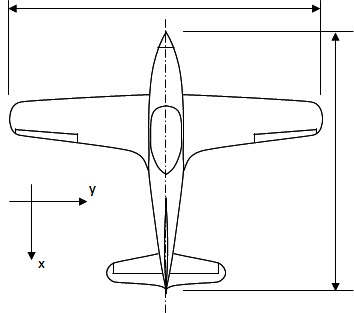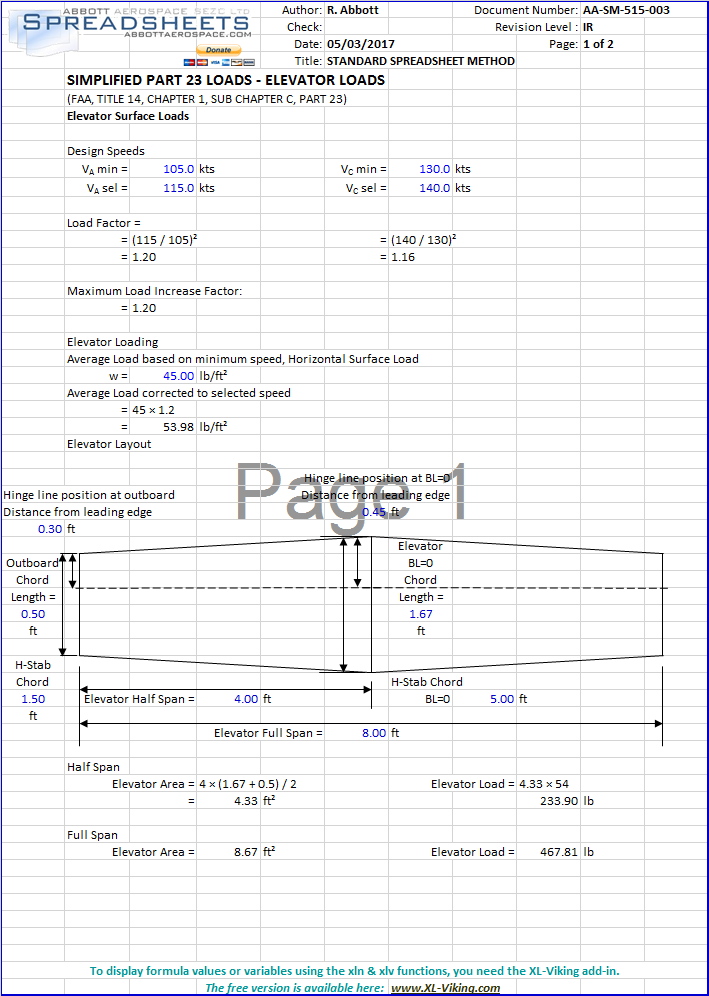Last year I wrote a few posts on the part 23 update:
http://www.abbottaerospace.com/faa-part-23-revamp-good-or-bad
http://www.abbottaerospace.com/further-thoughts-on-the-astm-part-23-update
http://www.abbottaerospace.com/final-thoughts-on-the-astm-part-23-update
I submitted a letter to the FAA as part of the consultation process:
http://www.abbottaerospace.com/wp-content/uploads/2016/05/AA-FAA-2016-001.pdf
The new set of regulations was established as a ‘final rule’ at the end of 2016:
https://www.faa.gov/regulations_policies/rulemaking/recently_published/media/Part23_FinalRule_2120-AK65_WebCopy.pdf
I have not has time to read the entire document but from what I can tell the proposed update to the regulation has been adopted without any substantial change.
If you have read what I have published about this you will know my opinion on the change. We started our practical response to this last year.
Our opinion is based on our point of view as airframe and mechanical systems specialists. There are potential upsides with regard to composites material qualification, which is extremely conservative under the current regulations and advisory material. But most of us (the people that I work with and correspond with on a daily basis) have the ‘if it ain’t broke don’t fix it’ approach. Tweaks and incremental change – good. Complete re-write – bad. The question is – how bad?
Preservation of Data and the Legacy Regulations
Because we do not know what the FAA will do with the current set of regulations and advisory materials we downloaded as much material as we could from the FAA website and have made it available through our online technical library (http://www.abbottaerospace.com/tag/faa-certification).
If you have not had chance it is interesting to read the comments submitted to the FAA during the rule making process
https://www.regulations.gov/docketBrowser?rpp=50&so=DESC&sb=postedDate&po=0&dct=PS&D=FAA-2015-1621
ASTM will not make much revenue on their investment in creating their standards until people pay for their product and people will not pay for the ASTM product while the familiar and free Amendment 62 regulations are allowed as an acceptable means of compliance by the FAA.
ASTM will be putting pressure on the FAA to start to remove or obsolete the existing amendment 62 documentation as an accepted means of compliance.
We have seen this happen a number of times where public domain US government references are developed into commercial product – Mil-Hndbk-5 into the MMPDS, Mil-Hndbk-17 into CMH-17.
Sometimes where old references have been made obsolete they are licensed out to commercial organizations and the freely available digital versions are removed – Mil-Hndnk-23 is a good example of this.
This gives commercial organizations exclusive commercial rights over formerly public domain information.
Application and Risk
This month we started an engagement on a project that will be one of the first to be done under the new regulation. This project has been allowed to use the existing amendment 62 regulations as an acceptable means of compliance under the new rules.
This is a practical work around but how many companies are going to switch over to the new ASTM standards while use of the old regulations are still permitted? You have to pay for the ASTM standards and the risks of using them have significant consequences. The risks include
- A lack of experience at the FAA in interpreting the new regulations leading to delays in the certification process
- With any new set of rules the policies will be in development and changing for some time. A change in policy during your certification program may cause changes and additional expense.
- Unfamiliarity in the OEM organisation with the new rules can cause problems in interpretation and cause expensive changes in the certification process part way through.
- If you want to certify under EASA, Transport Canada or another international body will those bodies require a separate compliance plan targeted at CS-23 or will the bilateral agreement still work in the same way?
It is a common experience that even a small differences in interpretation of the regulations and policies can cause disproportionate and sometimes fatal additional expense to a program.
It will be a very brave organization that departs from the amendment 62 regulations as long as they remain acceptable to follow.
Certification Risk Mitigation in Different Organizations
This begs the question: What use is the new rule if almost all people are likely to continue to use the existing set of rules?
The purpose of these new rules is to reduce the cost of certification. As the new rules represent a high risk option and the consequence of risk is cost, the justification for the change makes little sense.
Larger OEMs may be able to invest in the certification management and liaison infrastructure to mitigate the risk of going off the reservation of the part 23 amendment 62 standards and gain some benefit from the flexibility the new regulations provide. They will also have the money to invest in the additional compliance work to gain EASA and other foreign certifications. Smaller aircraft companies and startups will not have the resources to mitigate this risk, and while permitted to do so will be left using the current regulations. It is hard to know which will be the better route
Any benefit will be conferred on the larger companies and smaller companies will be placed at a relative disadvantage.
There may be an eventual downstream benefit if the new regulations allow less expensive compliance programs for more innovative products but the risk of departing from the established compliance route for most organizations will make that option unattractive.
Public Spin
It is a little disquieting to read quotes from people who have been instrumental in pushing for this change:
Michael Huerta (FAA Administrator) : Asked how the new approach to small airplane certification was being received at the FAA, Huerta replied, “People are wildly enthusiastic about this across the agency.”
Piper Aircraft CEO and GAMA chairman Simon Caldecott: Predicted that the rule would serve as a model for future reform, noting that as a proposal it was widely regarded as a “poster child for good rulemaking.”
Jack Pelton, EAA CEO and chairman: “The changes in Part 23 will allow new technology and better efficiency in designing, producing, maintaining, and operating today’s airplanes and create future GA designs. It ensures a favorable regulatory environment for GA in the future.”
I read many of the letters submitted during the consultancy process and there is a split between the largely similar concerns regarding the negative effect of the rule change and the positive comments. I think the weight of opinion is on the negative side. I would not describe the response of FAA staff as “wildly enthusiastic” and as they ignored all of the concerns during the consultation process neither a “poster child for good rule making”
The public narrative is one of optimism and excitement. The private opinions of many that I have heard is one of concern and incredulity that the FAA would remove large parts of the regulations and expect this to help companies navigate the uncertainty of the high risk compliance landscape.
This change (if you give credence to the interviews given) was initiated because it was too difficult to integrate new electronic technology in aircraft development.
The FAA, rather than opting for gradual change or change targeted at the stated specific problem have allowed specific groups in the industry to push for a radical rewrite coupled with commercialization of the rules and acceptable means of compliance.
Follow the Money
If this change was just a rewrite without the commercialization there would be less or no reason to doubt the motivation for the change. In this particular case a company (ASTM) will be making money from the aircraft certification process where they were not before. I think this is great for ASTM and I admire their ability to capitalize on the change in the regulations. I cannot believe that ASTMs motives solely arise from the purity of their heart and their desire to see safer aircraft developed for less money.
ATSM has total net assets of $266M (https://www.astm.org/ABOUT/ASTM-AR.pdf). In 2015 according to their financial statement their assets increased by around $8.5M.
It is worth noting that their net assets are mostly held in investments: $241M of Mutual funds, Hedge Money Market funds etc.
ASTM are a 501(c)(3) organization and are tax exempt.
ATSM may not be accruing or declaring profit but they are accruing and declaring wealth. I am not sure there is more than a small technical difference between the two.
There is a guaranteed additional cost to you if you choose to, or are forced to use the ASTM standards. There is a guaranteed additional benefit to the ASTM from the same action.
The FAA, rather than opting for gradual change or change targeted at the stated specific problem have allowed specific groups in the industry to push for a radical rewrite coupled with the commercialization of the rules and acceptable means of compliance.
If this change was just a rewrite without the commercialization there would be less reason to doubt the motivation for the change. In this particular case a private entity (ASTM) will be making money from the aircraft certification process where they were not before. I think this is great for ASTM and I admire their ability to capitalize on the change in the regulations, but I cannot believe that ASTMs motives arise solely from the purity of the heart and their desire to see safer aircraft developed for less money. I am sure they would like to add another $10M to their net assets. This rule change will certainly help ASTM achieve that aim.
I cannot see how further enriching ASTM is intended to help part 23 aircraft developers. There is a guaranteed additional cost and a learning curve for the OEM that includes further cost and risk.
The sledgehammer of radical reshaping and commercialization of the regulatory and compliance process has been employed to crack a nut that was originally just the incorporation of new electrical technology in GA aircraft.
Our Advice (for what it is worth….)
Our advice to part 23 aircraft developers is as follows.
- In order to give your product the best chance of international certification via the existing bilateral agreements we recommend sticking to the part 23 amendment 62 regulations as much as possible.
- In order to stay within the comfort zone and knowledge and experience of DERs and existing FAA staff we recommend sticking to the part 23 amendment 62 regulations as much as possible.
- In order to avoid financial cost and potential legal issues with ASTM (reproducing any part of the proprietary ‘advisory’ material – former regulations – in your work may be actionable) we recommend sticking to the part 23 amendment 62 regulations as much as possible.
I do not know how long the FAA will allow reference to the old part 23 regulations – so get your compliance plans submitted and approved ASAP!













